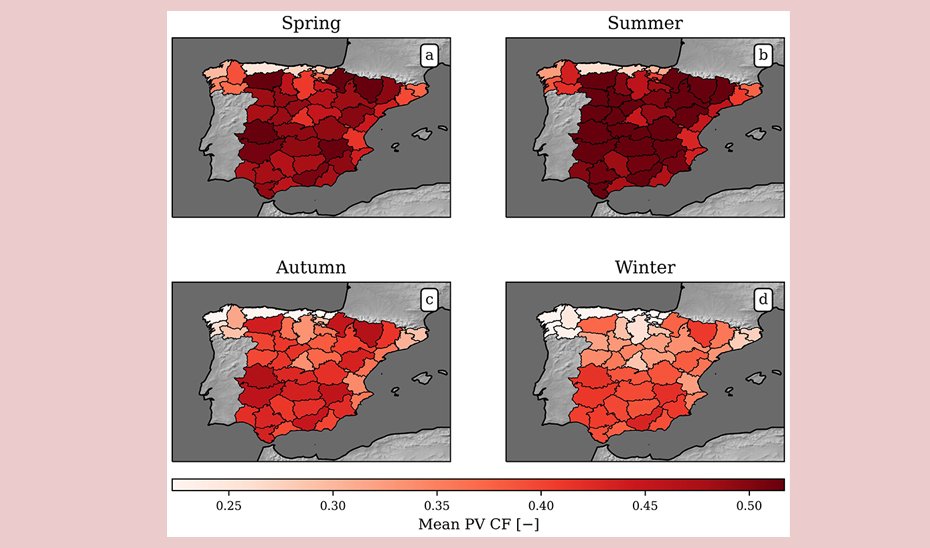A research team from the Department of Physics at the University of Jaén (UJA), in collaboration with the Department of Computer Science at Carlos III University in Madrid (UC3M), designed a free estimated database for photovoltaic solar energy that could be generated in Spain. Analyzed with Shirenda_pv, it has been developed using artificial intelligence and techniques, and in combination with other tools, it allows estimating the number of solar installations needed for deployment nationwide and the ideal locations to create a national electrical system based on renewable energy.
The study, conducted under the Met4lowCar Research Project of the Ministry of Science, Innovation, and Universities, also received funding from the University and the Ministry of Research and Innovation. It addresses a critical point in the transition to the mentioned system, such as the need for reliable resource databases (solar, wind, and hydraulic energy), high-resolution, and temporal data covering long periods of time. «Only with this type of database can the project be classified and studied.
Until now, physical models have been used to generate this type of database, simulating the behavior of actual solar plants based on meteorological data. «The problem is that to simulate solar generation in Spain, parameters like orientation or panel technology are unknown. This leads to significant errors, making existing databases unreliable,» explains Pozo.
The experts applied a different methodology, combining climate and real energy generation data from 2015-2020 provided by Spain Electricity (REE) to train machine learning models. They used three years for training and two for validation, and with the algorithms obtained, they estimated the production of photovoltaic solar panels from 1990 to 2020 for the entire Spain.
As a result, they created Shirenda_PV, a database of photovoltaic solar generation covering three decades with a time resolution. The tool is presented in the article titled «A new method for modeling renewable energy production using ERA5: solar photovoltaic energy,» published in the renewable energy journal.
Where and when does the most energy occur?
This database allows analyzing changes in solar generation over several years, identifying the most stable and productive regions. «There are areas in Spain with very stable solar generation over 30 years, and others where it synchronizes well with demand, although the production is lower. These areas could be of great interest for a renewable-based electrical system, helping reduce generation variability,» says the UJA expert.
The study identifies the southern and southwestern regions, especially the extremity, as having the highest solar production. It also reveals that winter is the most challenging season in Spain, with a significant fluctuation. This is due to the North Atlantic Oscillation (NAO), the most important climate variability phenomenon in Europe, which can vary by 20% from one winter to another. Specifically, during negative phases, generation can decrease by 16%, especially in the southern regions, while it increases by 10% during positive phases.
Solar, wind, and hydraulic energy
Shirenda_pv not only allows optimizing the location of solar plants but also anticipates climate variability and its impact on energy production. Additionally, it is open access, facilitating its use by the research community, businesses, and authorities responsible for energy transition.
The researchers have also developed similar databases for wind and hydraulic energy generation, all freely available, to complement the renewable potential record in Spain. In the upcoming project, currently underway, they will use all three to analyze the optimal electrical system based on these energies and study their behavior and reliability in climate change, among other objectives.

